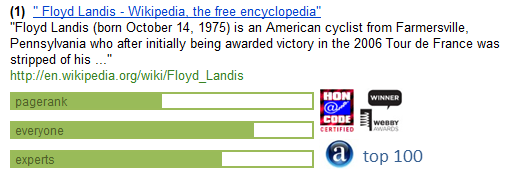Augmenting Web Pages and Search Results to Support Credibility Assessment
In July 2014, a rumor began circulating claiming the United States drinking age was about to change from 21 to 18. Though clearly from a disreputable source, the rumor went viral, fooling many Americans into believing they could commence their indulgent guzzling of gin, grappa, and other beverages three years early.
Such viral hoaxes are unfortunately quite common, fooling millions on a weekly if not daily basis. And despite regular reminders of the unreliable nature of web content, we are inclined to believe what we read online. The need for tools to better evaluate the credibility of online content is clear: without these tools our increasingly internet-based society will continue getting fooled by false information.
While judging the veractiy of a fact (e.g. the distance from the earth to the sun) is relatively easy, the large amount of subjective content on the internet (advice, opinion articles) makes objective measurements of credibility virtually impossible. Therefore, rather than assigning a score to a web page, the aim of this work was to provide more information about websites to help users make more informed decisions.
My mentor Merrie Morris and I developed and evaluated several visualizations of information for both search resuls and web pages. In short, I found that the visualizations we developed worked better for search results than webpages (more information was available on web pages to make a better decision), and the most useful piece of information was about how many 'domain experts' visited that webpage or website.

Acknowledgements
Thank you to BJ Fogg for graciously helping us with revisions, to Merrie Morris for her advice and hard work, and to my mother and David Klionsky for encouraging me to never give up on this challenging but very rewarding project.